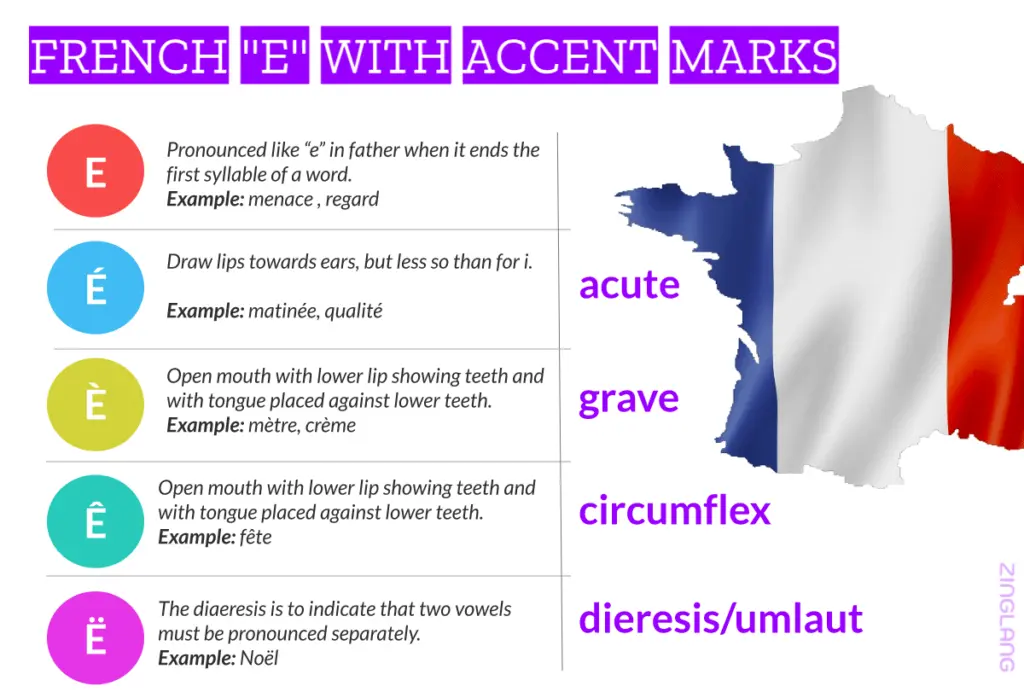To sound natural in French, you should know how to pronounce French e with accent and all its variants (accent marks – aigu, grave, circonflexe, and diaeresis). Some of these accents are found in other European languages too. For instance, in ë, the two dots over “e” are called umlaut in German.

French e with Accent
Let’s look at the French e with accent marks.
Regular e (no accent)
- French “e” without any accent mark is pronounced like “e” in father when it ends the first syllable of a word.
Example: menace (mә-nas), regard (rә-gaːr).
- At the end of a word, e without accent mark is silent except in words of one syllable.
Example: le (lә), je (ʒә), me (mә), ne (nә), ce (sә), de (dә), que (kә)
- “e” without accent mark is often pronounced like é (e) or è (ε) when followed by one or two consonants.
Example: et (e), assez (a-se), pied (pje), effet (e-fε), dessert (de-sεːr), est (ε), elle (ε-l)
é (e with acute accent)
This French e with accent “é” is common in French language.
French with accent acute é is like a in hate. The mark over this letter (é) is called the acute accent (aigu in French). Draw lips towards ears, but less so than for i.
Example: matinée (ma-ti-ne) qualité (ka-li-te) papier (pa-pje) désirer (de-zi-re).

è (e with grave accent)
French e with accent grave è is like e in there. The mark over this letter (è) is called the grave accent. Other spellings of this sound are ai and ê. Practice by opening mouth with lower lip showing teeth and with tongue placed against lower teeth.
Note: French -er at the end of a word often equals è (e).
Example: mètre (mεtr), crème (krεm), fête (fεːt), laisser-faire (lε-se-fεːr)
Read also French Classes in Coimbatore.
ê (e with circumflex)
The mark (ˆ) is called the circumflex accent. This French e with accent circumflex sounds similar to è. Practice by opening the mouth with the lower lip showing teeth and with the tongue placed against the lower teeth.
Example: fête (fεːt)
ë (e with diaeresis)
In French, when two vowels combine, they form a unique sound. For example, ou (route) and eu (liqueur, fameux). The diaeresis is to indicate that two vowels must be pronounced separately.
Example: Noël (nɔ-εl)
Note: Zing Languages’ French course comes with AI enabled speaking modules to perfect your French pronunciation.
FAQs
-
Can non-native speakers pronounce é like French people?
t takes time. It is difficult for the non-native speakers to pronounce naturally, unless you live in Francophone countries or live with native French-speaking person.
-
Is the letter ë native to French language or borrowed?
It is borrowed. The ë (e with accent tréma) is commonly found in other European languages such as German and Spanish. In French, there are few words with ë.
-
What are two dots over e (ë) called in French and German?
French, it is called diaeresis. In German, it is called umlaut.